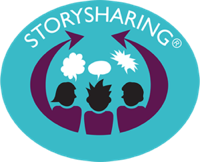Current theories suggest that there are critical links between sensory experiences, feelings and emotions, memory, and storytelling. These are relevant to all individuals, not just those who can verbalise their experiences.
The Hidden Spring by Professor Mark Solms, explains in depth the way in which emotional consciousness works, and demonstrates the awareness and responsively of individuals with profound disability – including those who are born without a cortex. .https://www.waterstones.com/book/the-hidden-spring/mark-solms/9781788162838
Mark gave a webinar on 21st April and you can find a summary of the theory and its implications here https://storysharing.org.uk/wp-content/uploads/2022/05/Neuroscience-Narrative-PMLD-summary.pdf
We now understand that memory and thinking are “embodied” – we remember through our senses being activated and reminding us of past experiences.
It is the emotional charge associated with these experiences that mean we attend to them, recall them, and want to share them.
We make sense of these experiences through turning them into stories. Empathetic responses by listeners help us to feel connected and to build up our resilience, confidence and sense of identity.
We remember more, and develop our skills through the process of telling and retelling our experiences.
If we have no opportunity to tell, those experiences stay with us as bodily sensations and emotions that we haven’t been able to process and understand. This is as true for a person with profound disabilities as for anyone else.
Through the processes of co-telling and active listening that we use in Storysharing®, we help all our participants “catch” and reflect the feelings of others. This leads to the development of empathy and understanding
Embodied memory https://link.springer.com/article/10.3758/s13423-019-01674-x
Embodied cognitionhttps://www.psychologytoday.com/us/blog/beyond-words/201202/embodied-cognition-what-it-is-why-its-important
Emotional contagion, mimicry and empathyhttps://www.academia.edu/21568809/Emotional_Contagion_and_Empathy
